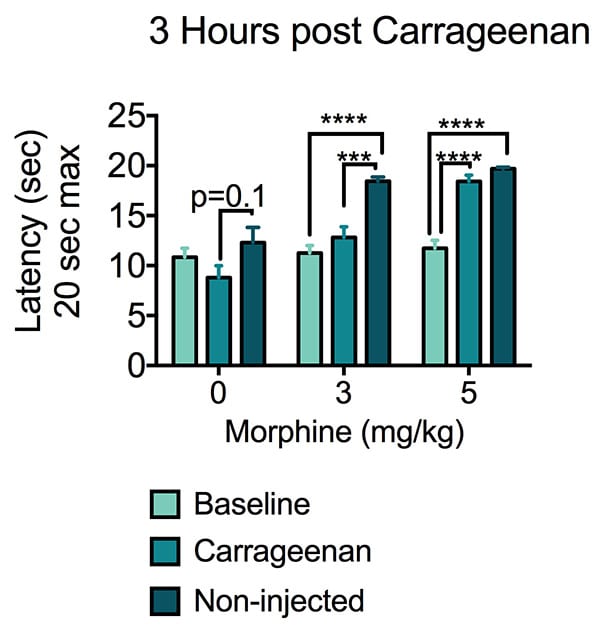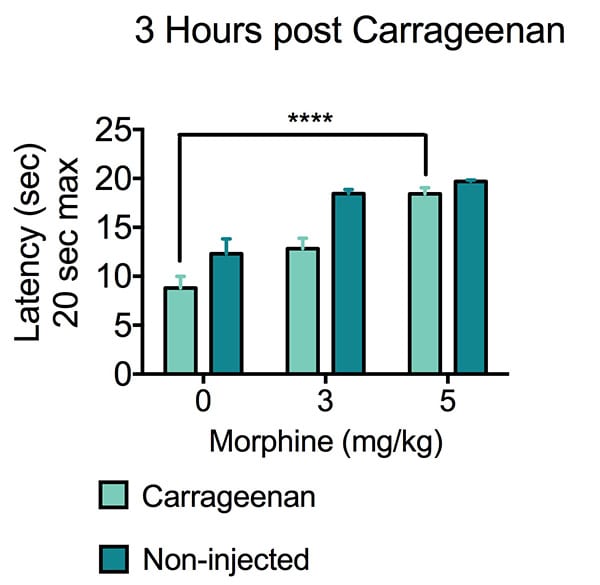Hargreaves Test for Hyperalgesia
Discover how Melior’s unique phenotypic screening platforms can uncover the untapped value of your candidate therapeutic
Hyperalgesia is a condition of enhanced sensitivity to painful stimuli. The Hargreaves test is utilized to assess changes in threshold latency to a small source of radiant heat on the hind paw.
A number of clinically approved pharmacological agents have been demonstrated to delay the onset of heat sensitivity upon paw exposure to heat including opioids and GABA potentiators.
Intraplantar carrageenan increases hyperalgesia in the rat hindpaw and is commonly used in assays of hyperalgesia. The study described below examines the effects of morphine in a rat model of thermal hyperalgesia.
Ready to get started or looking for a custom model?
Contact us today for more information about our bespoke research models and to discuss how we can help you answer your unique research questions.
Paw Withdrawal Latency. Carrageenan reduced paw withdrawal latency after three hours in the intraplantar-injection left hind paw compared to the non-injected right hindpaw in animals administered with a “threshold dose” of morphine (3 mg/kg). This effect was not significant in fully sensitive animals (0 mg/kg morphine) or insensitive animals (5 mg/kg morphine). Data are ± SEM; ****p<0.0001 compared to baseline,***p<0.001 compared to Carrageenan.
Morphine’s Effect on Paw Withdraw after Carrageenan Challenge. In a separate study, morphine (5mpk) significantly increased paw withdrawal latency compared to vehicle control animals. Data are ± SEM; ****p<0.0001 compared to Carrageenan.
The Hargreaves test of hyperalgesia is typically run in an acute mode by evaluating test articles after a single administration. Although performance measurements can be performed in a single day the procedure does involve establishing baseline prior to treatment effect measurement. As a result the Hargreaves test is at least a 2-day procedure. Since it is non-invasive it can easily be incorporated at several time points in a chronic study. Ideal group sizes are usually about 8-12 animals. It can be performed in both mice and rats.





